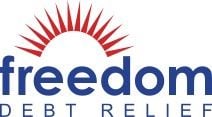Chapter 7 vs. Chapter 13 Bankruptcy: What’s the Difference?
Chapter 7 bankruptcy is faster and cheaper than Chapter 13 bankruptcy, but it could mean selling the things you own.

Many, or all, of the products featured on this page are from our advertising partners who compensate us when you take certain actions on our website or click to take an action on their website. However, this does not influence our evaluations. Our opinions are our own. Here is a list of our partners and here's how we make money.
What's new:
Bankruptcy filings — both personal and business — were up 10.6% in the 12-month period ending September 30, compared with the previous 12 months, according to the Administrative Office of the U.S. Courts. Total filings have increased each quarter since June 2022.
Chapter 7 and Chapter 13 are the two most common types of bankruptcy for people in the United States.
The biggest difference between Chapter 7 and Chapter 13 is that with Chapter 7, the things you own may be liquidated, and you don’t have to make a plan to pay back your debt. With Chapter 13, you keep your belongings and make a plan to repay your debt over time.
When it makes sense to choose Chapter 7 or Chapter 13 bankruptcy
You might consider Chapter 7 or Chapter 13 bankruptcy if:
- Your monthly debt payments add up to more than half of your monthly take-home pay.
- Your creditors are trying to sue you.
- You see no way to pay off your debt within five years.
Looking for an alternative product to pay down your debt?
Learn more about our debt relief partners belowChapter 7 vs. Chapter 13 bankruptcy: Key differences
Chapter 7 and Chapter 13 bankruptcy are different in the way they handle your debt, who’s eligible and how long it takes to complete the process.
Most notably, with Chapter 13 bankruptcy, you’ll make a plan to repay all or a portion of your debts to creditors over time and will keep your belongings.
With Chapter 7 bankruptcy, you won’t have to make a plan to pay back the debt, but may have to sell nonexempt assets and give the proceeds to creditors.
Nonexempt assets aren’t protected by bankruptcy law, so they can be sold. This can include jewelry, or the equity in your house or car if it’s higher than your state’s exemption limit.
However, most individual Chapter 7 filings are “no asset” cases where there are no nonexempt items to sell. In these cases, the debt is typically wiped out and creditors aren’t repaid.
Chapter 7 bankruptcy is usually best suited for people who don’t have a steady income, and Chapter 13 is best suited for those who do.
» LEARN: How often can you file bankruptcy?
The table below outlines key differences between Chapter 7 and Chapter 13 bankruptcy.
Chapter 7 vs. Chapter 13
| Chapter 7 | Chapter 13 |
|---|---|
| Form of bankruptcy: Liquidation (property is sold to pay off debt). | Form of bankruptcy: Court-approved repayment plan. |
| Pros:
| Pros:
|
| Cons:
| Cons:
|
| How long it takes to achieve a discharge: Usually under six months. | How long it takes to achieve a discharge: Usually three to five years, depending on the repayment plan. |
| Mark on credit report: Up to 10 years from filing date. | Mark on credit report: For seven years from filing date. |
| Eligibility:
| Eligibility:
|
Which is better for you: Chapter 7 or Chapter 13?
To figure out whether Chapter 7 or Chapter 13 bankruptcy is right for you, meet with a bankruptcy attorney or a nonprofit credit counseling service. You’ll want to make sure that bankruptcy is the right strategy for your debts, and that you’ll be able to make the most of the fresh start that bankruptcy offers.
As you compare your options, consider this information:
Most consumers filing for bankruptcy choose Chapter 7
Chapter 7 bankruptcy is faster and cheaper than Chapter 13. Chapter 7 bankruptcy discharges, or erases, eligible debts like credit card bills, medical debt and personal loans. But other debts —such as student loans and taxes — typically are harder to get rid of. Chapter 7 also doesn’t offer a way to get caught up on secured loan payments, like a mortgage or auto loan, and it doesn’t protect those assets from foreclosure or repossession.
In some cases, a bankruptcy trustee — an administrator who works with the bankruptcy courts to represent the debtor's estate — may sell nonexempt items, meaning belongings that aren’t protected during bankruptcy. Nonexempt items vary according to state law.
Higher-wage earners may choose Chapter 13
Chapter 13 bankruptcy may be better for people who don’t qualify for a Chapter 7 filing because their income is too high.
Some people who qualify for Chapter 7 may still choose to file for Chapter 13 because they want to keep certain assets or get caught up on their mortgage payments. However, Chapter 13 repayment plans are challenging: All disposable income (after certain allowances) has to be put toward repaying debt over three to five years.
Both bankruptcy options will affect your credit
While a bankruptcy filing stays on your credit report for up to 10 years, you can use the opportunity to make a fresh start and take immediate steps to begin rebuilding your credit.
» Learn more about rebuilding credit after bankruptcy
Article sources
NerdWallet writers are subject matter authorities who use primary,
trustworthy sources to inform their work, including peer-reviewed
studies, government websites, academic research and interviews with
industry experts. All content is fact-checked for accuracy, timeliness
and relevance. You can learn more about NerdWallet's high
standards for journalism by reading our
editorial guidelines.
Related articles











